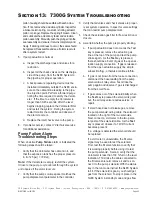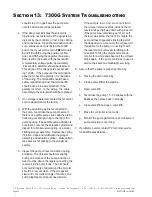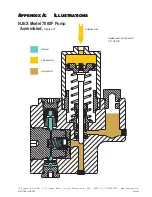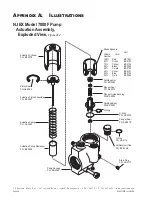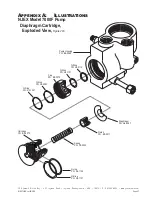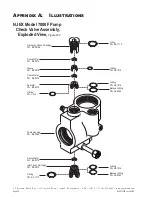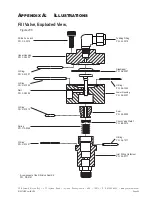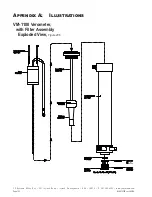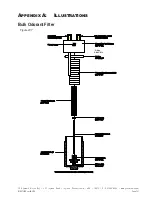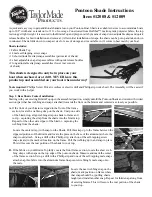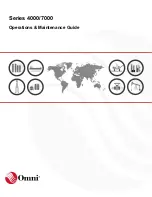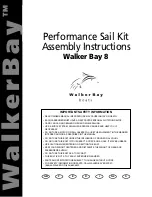
YZ Systems Milton Roy • 201 Ivyland Road • Ivyland, Pennsylvania • USA • 18974 • P: 281.362.6500 • www.yzsystems.com
Page 86
NJEX 7300G ver.08-2018
Section 13: 7300G System Troubleshooting
Signal Alarm & Non-Alarm
Troubleshooting Steps,
Continued
3.
Low flow
indication is not an actual alarm, but
an indication that the system is reading the flow
signal to indicate the system is in the low flow shut
off condition stipulated by the low flow shut off
parameter. If it is felt this indicator should not be
on, given the current flow, first check the param-
eter for the Low Flow Shut-Off to verify it is set as
desired. As a second step, evaluate the flow sig-
nal being recived. Verify that the signal indicats
the correct flow, and that the signal spanned and
zero referenced correctly. If necissary correct as
required.
4.
Overflow
indicator will activate when the flow
signal is showing greater than 110% and less than
125% of the maximum gas flow according to the
set up conditions indicated in the parameter and
calibration sections of the N-300 controller.
a. If reading an analog flow signal, linear or non-
linear), a grounding reference error can cause
this condition. Check that the grounding
system is correctly in place. Read the flow
signal voltage on
TB1
pins
2
and
3
. If the
voltage reading on the volt meter is greater
than 5v, the problem resides with the trans-
mitted signal. Correct as necessary at the
signal source. If the voltage on the volt meter
is within the 1-5v range, the problem is most
likely a grounding or isolation issue. This can
be corrected by re-establishing the ground or
installing a signal isolator device.
b. If the NJEX System is set to recieve a pulse
signal and recieve this alarm, two issues
could genreate this alarm. First, the span fre-
quency could be set incorrectly. Recalculate
the span frequency and inspect the setting in
the Claibration section of the N-300 Control-
ler. The other cause could be the result of
electrical noise interferance resulting in the
system intrepreing this noise as pulses.
Verometer Alarms
There are a variety of Veromter alarms monitored
by the N-300 Controller to ensure correct and safe
operation of the NJEX System. The alarms relating
to Verometer performance and their description is as
follows:
•
Vmtr-Cable
alarm indicates a failure to comunicate
between the verometer and the N-300G controller.
•
No Fill
alarm is activated triggered if the Verometer
fails to fill to 100% within 6 minutes after a fill is
requested.
•
Slow Fill
alarm is indicated when a fill of the
Verometer is requested and the Verometer does not
fill to 100% within 3 minutes. This alarm actuates
with either an automatic or manual fill request.
•
Leakage
is indicated when pump displacement is
calculated with a greater than 50% above param-
eter safety. As if Verometer was leaking fluid and
system will not continue to refill.
•
Flvalv-Fail
alarm indication is signaled if the level in
the Verometer increases when a fill is not request-
ed by the controller.
•
OdorInlet Cable
alarm indicates a failure to comu-
nicate between the fill valve pressure transducer on
the Bulk Odorant Storage Tank side and the N-300G
controller.
•
OdorInlet Lo
alarm indicates that the odorant pres-
sure has dropped lower than defined in the set up
parameters in the N-300G controller.
•
OdorInlet Hi
alarm indicates that the odorant
pressure has exceeded the maximum pressure as
defined in the set up parameters in the N-300G
controller.
•
XTank - Cable
alarm indicates a failure to comuni-
cate between the Expansion Tank transducer on the
fill valve assembly and the N-300G controller.
•
XTank Low
alarm indicates the pressure in the
expansion tank has dropped below the defined mini-
mum set point for the Expansion Tank.
Summary of Contents for NJEX 7300G
Page 1: ...NJEX 7300G N A T U R A L G A S O D O R I Z A T I O N S Y S T E M ...
Page 2: ......
Page 3: ...The NJEX 7300G Instruction Operating Manual Version 08 2018 ...
Page 4: ......
Page 10: ......






















